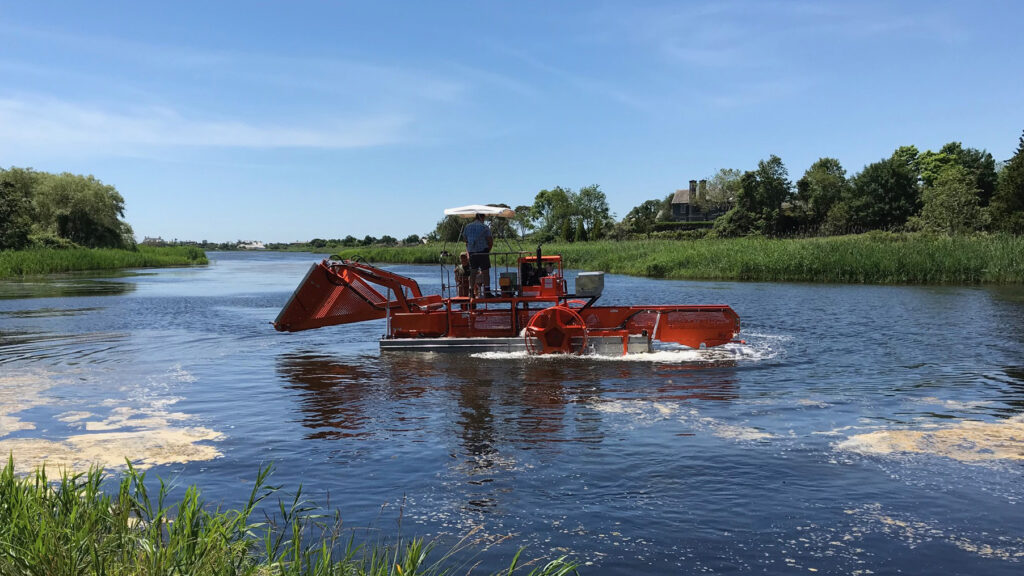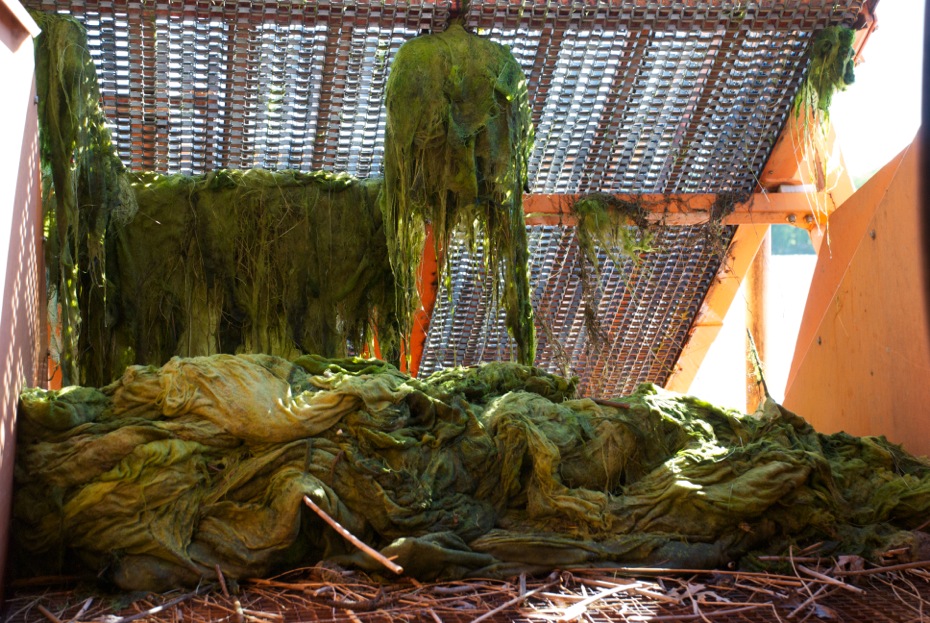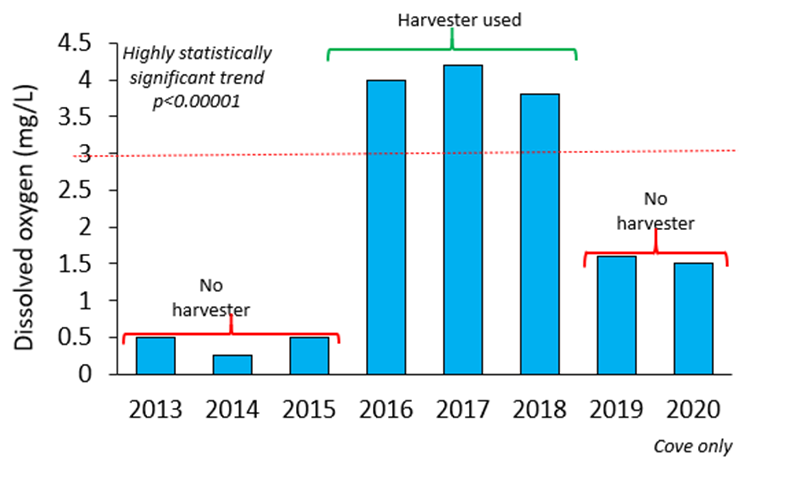We are very pleased to report progress on our efforts to gain approval to use the Aquatic Weed Harvester on Georgica Pond this summer. For three years between 2016-2018 the Friends of Georgica Pond Foundation, in collaboration with the East Hampton Town Trustees, operated an Aquatic Weed Harvester on Georgica Pond. The project was an experiment to test whether the removal of mats of filamentous green algae and other common aquatic vegetation would reduce the amount of nitrogen and phosphorous available to trigger toxic cyanobacteria blooms later in the season.

The East Hampton Town Trustees have once again approved the project and the Town of East Hampton Planning Department staff has recommended a “negative declaration” (the project will not have a significant effect on the environment and a draft environmental impact statement is not required). The Zoning Board of Appeals have also reviewed the project and recommended it to the Town Board. We eagerly await the Town Board’s decision sometime this month.
The pilot project proved to be a success with no pond-wide cyanobacteria blooms and a statistically significant increase in dissolved oxygen during the three trial years (Gobler Lab, SOMAS, Stony Brook University).


Negative impacts of the harvester such as by-catch (inadvertent harvest of small fish and aquatic organisms) was carefully monitored by the Peterson Lab of Marine Community Ecology, SOMAS Stony Brook University. There were no significant differences between aquatic organisms and vegetation in harvested and non-harvested areas of the pond.
Operating the harvester is an immediate way to treat a symptom of what is ailing Georgica Pond. It is anticipated that the use of the aquatic harvester will be required for the next five years. It is not a permanent solution. At the same time, long-term, watershed-wide projects such as upgrading septic systems to the new I/A (innovative/alternative) systems which actually remove nitrogen from septic waste water, reducing the use of fertilizer and reducing stormwater runoff are required to address the sources of the excessive nutrients and bacteria which are polluting the pond.
In a recent article in the East Hampton Star, it stated:
“A lone bright spot came in statistics regarding Georgica Pond, where a yearslong effort, including replacement of septic systems with new nitrogen-reducing models and the use of an aquatic weed harvester to remove sources of nitrogen and phosphorous, has dramatically reduced Cyanobacteria measurements since 2016.”
We are very grateful to the many residents who have supported this project, our science team of Dr. Christopher Gobler and Dr. Brad Peterson of Stony Brook University and our consultants at Land Use Ecological Services, Inc.
